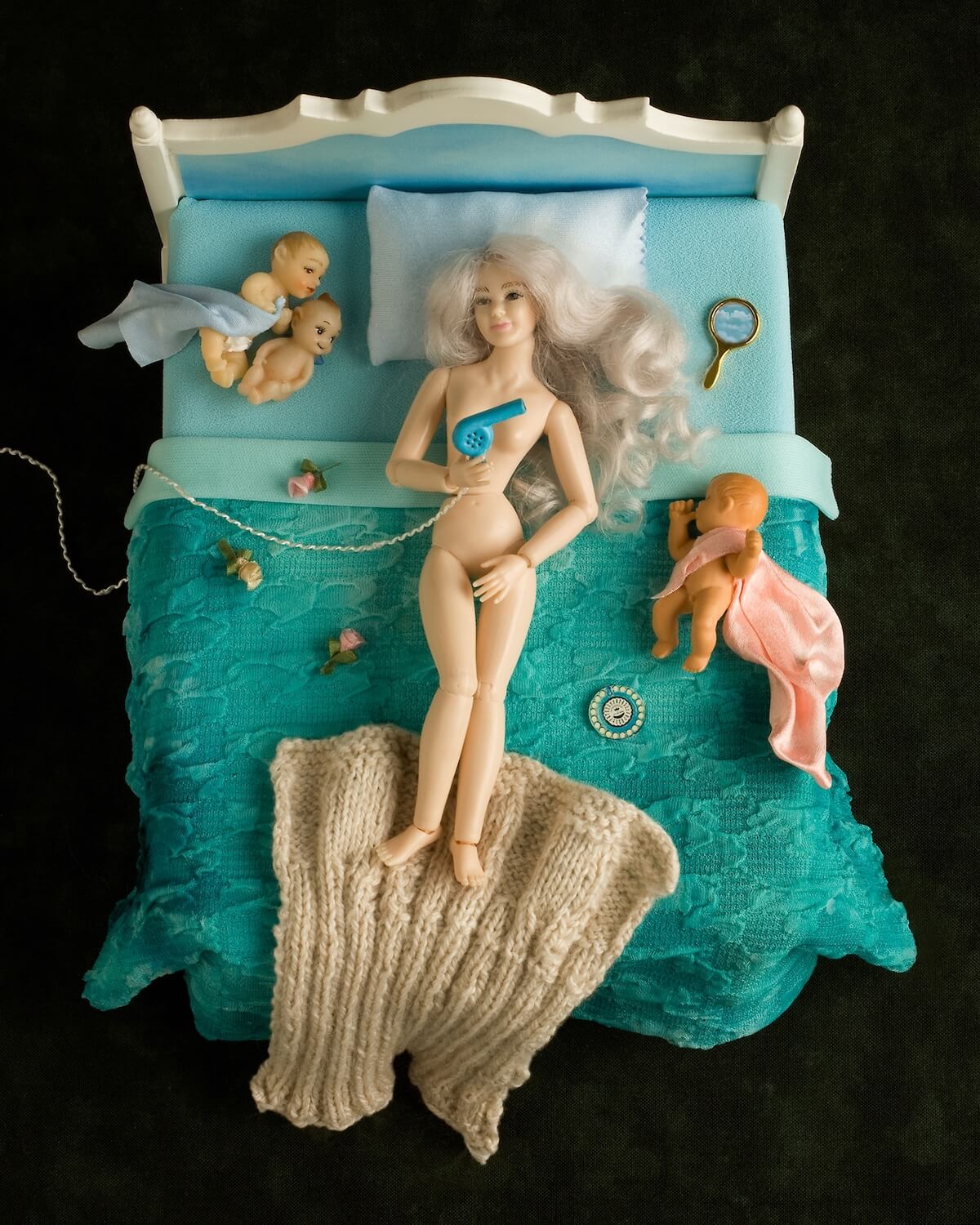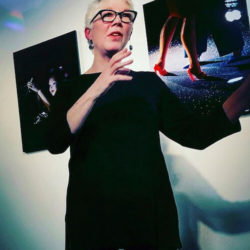Grace Weston
TIFA 2021 Interview with Grace Weston
1st Place winner in Portfolio, Professional, “Psychodramas In A Miniature World”
Q: Tell us a bit about your background? How did you discover your love for photography?
I grew up in a small town in New Jersey. Although it was rural, the drive to New York City only took 50 minutes. My working class dad had a passionate appreciation for all of the arts, and brought me from an early age to the great art museums in New York. From the time I was small, I was determined to be an artist.
Fast forward, I attended a junior college in New Jersey that had a brand new campus with a full art department. The teachers were all working artists, many of whom exhibited in galleries in New York. I struggled with painting, but photography came very naturally to me – I had a clear point of view in my work, and was strongly encouraged by my instructor. I became the darkroom assistant, and fully immersed myself in photography.
Many years later, I had the opportunity to assist a studio photographer. I fell in love with working in the controlled environment of the studio, approaching photography as a blank canvas, rather than “treasure-hunting” out in the field. The chance to stage images from my imagination was thrilling, and I’ve never looked back. I felt at home and invigorated.
Q: What was your last work and how did the initial spark of inspiration come about?
My most recent piece is “Judy and Hal” (working title). It is a re-imagining of the Judith and Holofernes story, famously depicted in numerous historic paintings showing Judith beheading Holofernes. My take on it is staged in a late 1960’s laundry room, after the beheading event. Judy is seated on the washing machine, enjoying a drag of her Virginia Slims cigarette, while Hal’s (Holofernes) severed head awaits on some bloody towels and rags next to the laundry basket. Describing this in words makes it sound incredibly gruesome and grim, but it is actually a humorous image, emphasizing Judy’s satisfaction in her triumphant act over an evil adversary.
“Judy and Hal” continues my series of reimagining stories, myths, and historic paintings from a feminist point of view, sometimes tweaking the story to empower the female character, rather than to show her as the victim or the pretty, but one-dimensional, muse.
Countless myths and ancient stories carry very misogynistic messages. I am inspired to counter that narrative. My first piece in this series is my interpretation on “Leda and the Swan” entitled “No Means No”. In that piece, Leda defends herself with a knife against the would-be rapist Zeus (disguised as a swan).
Q: You were awarded TIFA 2021 Portfolio Photographer of the Year for your dramatic and provocative work, Psychodramas in a Miniature World. What was the main message that you wanted to convey through your work?
Although I never photograph actual people in my work, the human psyche and the follies and foibles of human existence sit at the core of my narratives. Miniature characters, constructed sets and props, and vivid colors allow me to address weighty issues in a lighter manner.
Half of the images in my submission are from a Noir series, and they are dark, mysterious, and psychological, offering clues, but no answers. They are inspired by the very human tendency towards harboring private thoughts and secrets, and even darkness.
Q: What is the thing you loved most about photographing these scenes?
I love the magic moment of looking through the viewfinder and all the previous hard work of sourcing the materials, the research and development of the props and the sets and the building of each element, coalesses with the lighting. At that moment what I imagined in my head starts to take real form in front of my eyes.
Q: What other genres do you enjoy creating in and why?
I enjoy creating props when needed. I am constantly researching and learning new skills to make props that can’t be found elsewhere, or to alter items I find to fit my needs. It can be frustrating, working with new techniques and materials, with failed results, but I’m always learning from it, and sometimes the failures can be pretty amusing.
Q: What does winning this award mean to you?
It is a great honor to be recognized on this international scale. Many more eyes have been led to my work, and already an interview for another publication has presented itself. It’s also very validating to receive a cash acknowledgement in a world that identifies value in that way. Artists generally don’t get enough financial validation, but we keep working anyway!
Q: What would be your dream project in photography if there would be no budget limits and you could travel anywhere, photograph anything/anyone?
I would stay right here in my studio! I am so fortunate to be living my creative dream life now and grateful to have my studio just steps from my back door. With no budget limits, I would probably hire a sewing tutor who specializes in miniature costuming (as used in stop-motion animation) and other experts in skills that could improve my imagery and help speed up my learning curves. I just want to keep getting better.
Q: What would be the one advice you would give to novice photographers?
Explore your voice and find your distinct style. Everyone is unique with their own point of view. Trust your instincts, and don’t try to please others. Please yourself, those who resonate will find you.
Q: Are you working on something new right now? Can you tell us a little bit about it?
Continuing with my twist on myths and stories, I am working on a scene with Medusa. She was initially a beautiful woman who was raped by the god Neptune. Her beauty was blamed for causing her own rape, and she was punished (rather than Neptune). Her beauty was replaced with a monstrous face, snakes instead of hair, and her gaze was to turn men into stone (Too bad Neptune wasn’t turned to stone first!) I will stage my scene in a more contemporary setting, and reference some of the elements of her story from a feminist point of view.

